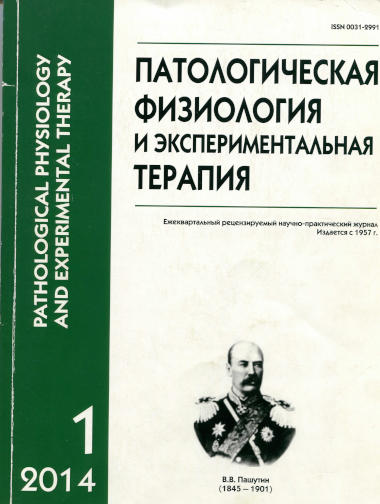The changes of plasma levels of soluble TNF- α and TNF-R1 ratio is a prognostic marker and key element of the stroke pathogenesis
Keywords:
stroke pathogenesis, prognostic marker, sTNF-α, sTNF-R1
Abstract
The goal of the present study was to investigate the plasma levels of sTNF-α, sTNF-R1 in acute stroke patients, to study the relation between ones, the neurological stroke severity and functional disability. The investigations comprised 60 ischemic stroke patients, 25 patients form control group. Plasma levels of sTNF-α, sTNF-R1 were detected by means of ELISA. The conclusion of interaction of sTNF-α and tmTNF-R1 increases inflammatory and apoptotic brain tissue damage on the first day of stroke is drawn. On the 7-th and 21-st days of stroke sTNF-α realize a neuroprotective effect. The interaction sTNF-α and sTNF-R1 blockade of damage expansion. As the result, prognostic significance of sTNF-α/sTNF-R1 is showed.Downloads
Download data is not yet available.
Published
03-02-2014
How to Cite
Sergeeva S. P., Litvickiy P. F., Breslavich I. D., Gultyaev M. M. The changes of plasma levels of soluble TNF- α and TNF-R1 ratio is a prognostic marker and key element of the stroke pathogenesis // Patologicheskaya Fiziologiya i Eksperimental’naya Terapiya (Pathological physiology and experimental therapy). 2014. VOL. 58. № 1. PP. 13–17.
Issue
Section
Original research






